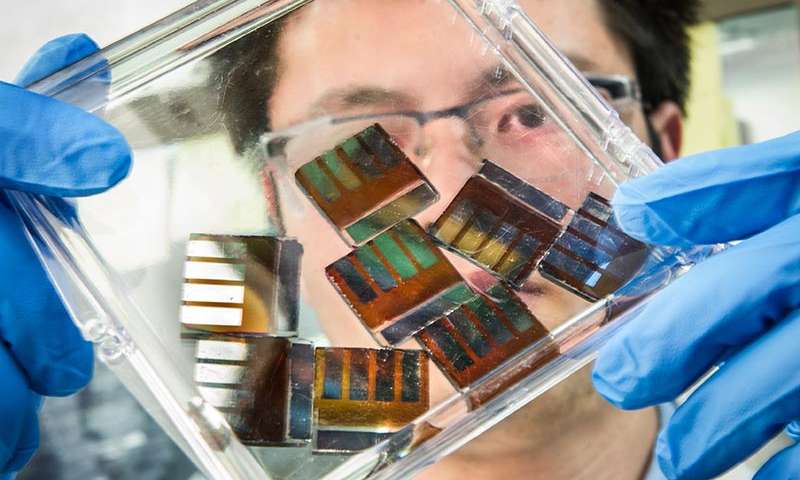
Scientists at the Energy Department’s National Renewable Energy Laboratory (NREL), in collaboration with researchers at Shanghai Jiao Tong University (SJTU), devised a method to improve perovskite solar cells, making them more efficient and reliable with higher reproducibility.
The research, funded by the U.S. Department of Energy SunShot Initiative, involved hybrid halide perovskite solar cells and revealed treating them with a specific solution of methyl ammonium bromide (MABr) would repair defects, improving efficiency. The scientists converted a low-quality perovskite film with pinholes and small grains into a high-quality film without pinholes and with large grains. Doing so boosted the efficiency of the perovskite film in converting sunlight to 19 percent.
The efficiency of perovskites in converting sunlight into electricity has jumped from slightly less than 4 percent in 2009, when the first tests were done, to more than 22 percent today. However, the efficiency can fluctuate according to the skills of the researchers making perovskites at different laboratories, to somewhere between 15 percent and 20 percent.
Perovskite films are typically grown using a solution of precursor chemicals that form the crystals, which are then exposed to a second anti-solvent that removes the precursor solvent. The fast-crystallization process is almost an art. NREL researchers found that, because of the narrow time window for properly adding the anti-solvent, it is easy to miss that window and perovskite crystals with defects could form. Defects, like noncontinuous crystals and nonuniform crystals with relatively small crystallite sizes and pinholes, can significantly reduce the effectiveness of a perovskite cell.
The scientists from NREL and SJTU came up with a better method, using what’s called the Ostwald ripening process. The process involves small crystals dissolving and then redepositing onto larger crystals. The researchers were able to induce the Ostwald ripening process by treating the perovskite with a MABr solution. The amount of the solution proved key, as the ideal was proven to be about 2 milligrams per milliliter.
“With the Ostwald ripening process, different-sized nanocrystals formed with different film qualities could then grow into pinhole-free perovskite films with similar large crystal sizes,” the researchers noted in the article. “Thus, this new chemical approach enhances processing tolerance to the initial perovskite film quality and improves the reproducibility of device fabrication.”
The improved film quality made the cells more stable. The perovskite cells treated with MABr were shown to be more efficient than those without the treatment. Untreated cells had an efficiency of about 14 percent to 17 percent, while cells treated with the MABr solution had an efficiency of more than 19 percent.
[Source: Phys org]




